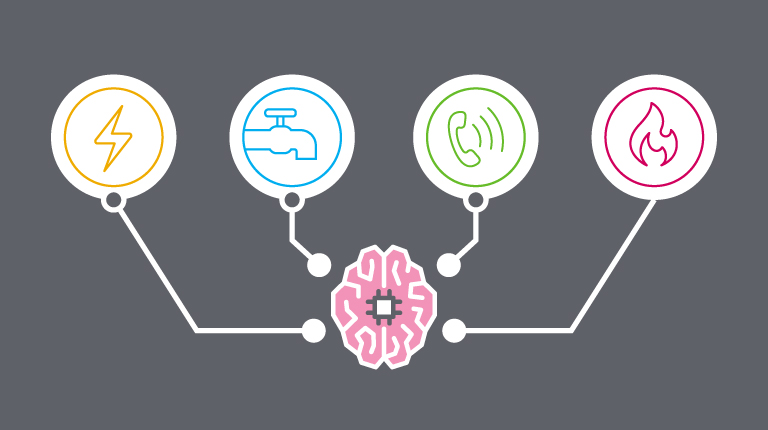Deploying AI in the enterprise has driven a lot of hype over the past couple of years, with regular news articles raising fears and hopes around the possibilities of what AI can accomplish. Enterprises are being bombarded with calls to adopt AI in their company, and many are adding the new technology to their lineup.
According to research from Gartner, the top three motivators for AI and Machine Learning (Ml) investment are to improve customer experience, automate repetitive or manual tasks, and reduce costs. While a top use case for Conversational Artificial Intelligence (AI) is customer service, in order to successfully deploy a solution, there needs to be a focus on the outcomes you want to achieve. This was a key takeaway from the Gartner Customer Experience and Technologies Summit I recently attended in London.
It is all about the outcomes
As technology becomes more important to customer experience, it’s important to consider the end goal before choosing which technology to implement. Here are some questions to consider when evaluating what success will look like:
- Are you trying to improve the experience for your customers?
- Are you aiming to deliver a more personalized engagement with your customers?
- Are you trying to deliver predictive interactions?
- Are you trying to improve the experience of your employees and reduce repetitive tasks in your contact center?
- Are you trying to reduce operational expenses for the enterprise?
- All of the above?
Answering questions like these will help keep the focus on the outcome, versus simply implementing technology to keep up with the hype.
Keep a common vision
As companies continue to realize the importance of a customer-centric approach, customer experience is becoming everybody’s job. Therefore, it’s important to create a common vision about what customer experience actually means for your organization. This prevents activities from being disjointed across the organization, and allows for coordination instead of chaos by setting one direction for everyone to follow.
Find an experienced partner
With AI, it is important to find a vendor that has experience in the area you want to utilize AI. Seek a partner, not a vendor, as you want someone who will work with you over the long term and drive continuous improvement. AI capabilities are still narrow, but improvements are happening in leaps and bounds. It is key to partner with a vendor who has a strong vision of where AI can take your organization, and will deliver appropriate solutions to achieve the outcomes you are focusing on. Lastly, find a partner that has successfully deployed solutions that align with what you want to achieve and ask for references from their current customers.
Use AI to stand out from the competition
According to Gartner, by 2020, approximately 86% of a customer’s relationship with a company will occur without the customer interacting with a human. Companies have the opportunity to make these interactions positive by implementing an intelligent and conversational virtual assistant. Done correctly, an automated virtual assistant can actually create a better customer experience than a human can.
By using technology such as AI, enterprises are able to transform the way that customers interact with them. Paying attention to customer preferences is essential to stand out from the competition and deliver exceptional customer experience. By adding Intelligent Virtual Assistants or other technology to improve customer experience, brands can keep their customers coming back time and time again. They can get rid of long and frustrating wait times, expand into more channels, and provide both a convenient and efficient way for customers to get things done.
What makes the ideal customer experience?
At the CX Summit, Gartner presented strategies for CX victory and emphasized the following characteristics to make customer service top notch:
- Effortless – Delighting a customer doesn’t always drive revenue, but reducing effort, as the customer perceives it, can increase the share of wallet
- Imitate – Your customer is not comparing you to your competition but to the last customer experience they had, regardless of brand or product, so imitate what the CX winners are doing
- Complete – know what your customer is trying to accomplish and put the solutions in place to get those jobs done.
Because of their ability to incorporate these characteristics, service leaders expect use of AI and virtual customer assistants to gain importance in the future. “Sixty-eight percent of service leaders indicate that bots and VCAs will be more important in the next two years,” says Lauren Villeneuve, senior principal, advisory at Gartner. “Service centers should seriously be considering how this technology could be integrated into current operations, in both customer-facing and rep-facing systems.”
Getting started
So how do you get started with developing a successful customer care strategy? We’ve outlined the 4 steps that address the major points you need to consider when building a customer care roadmap.





